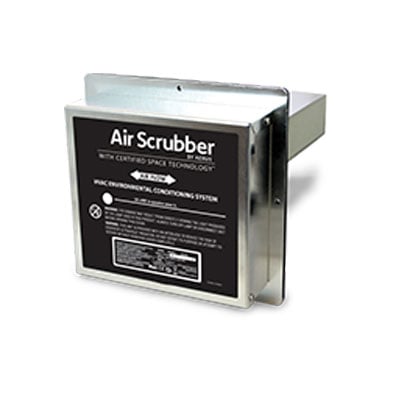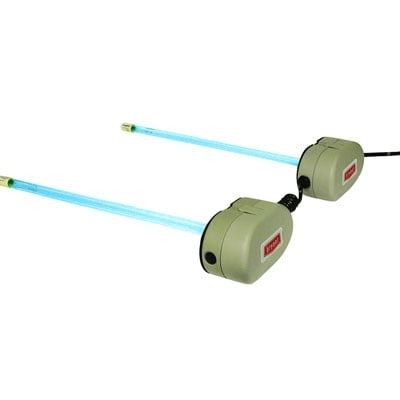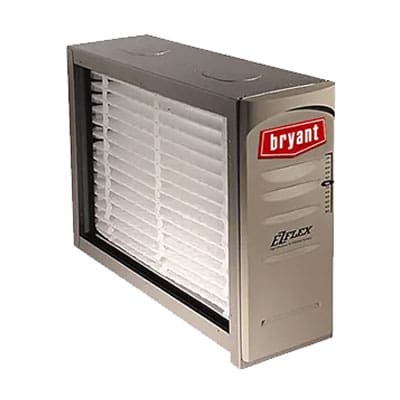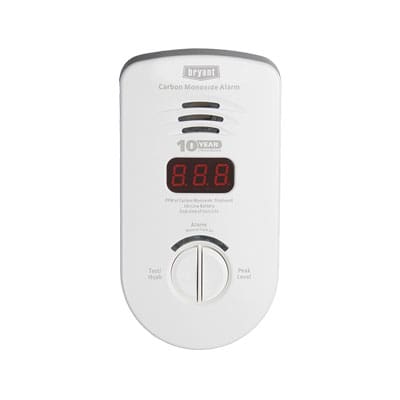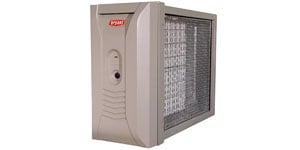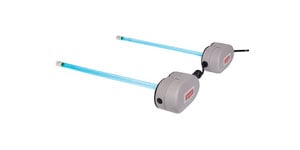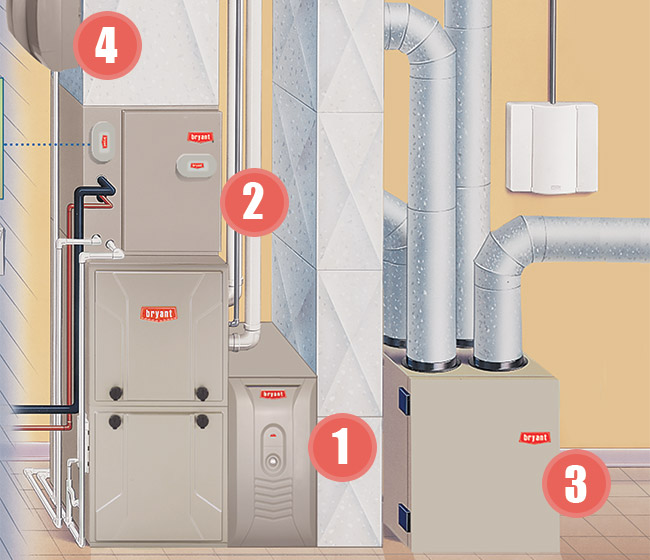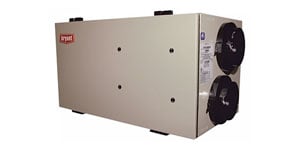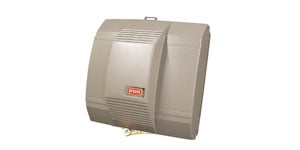Portland Metro Indoor Air Quality Solutions
We Strive to Be A Leading Local Indoor Air Quality Company
Indoor Air Quality Services
VOCs come from a variety of things including household cleaners, carpets, paints and even your bed if you’ve purchased it in the last 20 years. In fact, VOCs are such a rising concern that some homeowners are making the switch to all organic beds, carpets and other household items including daily soaps and cleaning products.
The good news is that you can also radically change the quality of your air with indoor air quality products from Efficiency Heating & Cooling ! We offer indoor air quality products that integrate into your heating and air conditioning system to restore quality to the air you breathe. These products are not mutually exclusive, but work together to filter, protect, refresh and purify the air you breathe! Read below to learn more, or call us today for a free in-home estimate!
1. Air Cleaner
The normal filter included with your furnace or fan coil only catches large duct particles in the air. An advanced air cleaner such as the Bryant® Evolution® air cleaner microscopic particles from the air including smoke, bacteria, dander, allergens and even viruses! We offer various levels of advanced filters that operate at different MERV ratings.
2. UV Lamp
A UV lamp has a specific purpose in regards to indoor air quality, and that is to kill mold that grows on the indoor coil. When your air conditioning system is running, warm air from the home is pulled through the chilled coil. The heat energy exchange causes moisture to condensate. This dark, humid area is a prime breeding ground for mold which affects air quality along with system efficiency.
3. Ventilator
A ventilator adds some magic to your HVAC system by efficiently exchanging outdoor air for indoor air. It’s like opening a window in the middle of the winter without a hit on your comfort or your utility bill! Ventilators come in two primary flavors: A heat recovery ventilator (HRV) exchanges heat energy to protect air conditioning and heating costs.
4. Humidifier
Sometime winter air is just a little too dry. This affects your skin and eyes. It can affect woodwork and instruments made from wood. It can also affect your heating bill because dry air feels colder. A whole house humidifier restores balance to your home by supplying humidity to the air as it returns from the heating system. With the right configuration you can also purchase a thermostat that measures humidity offering precise control.
Our Indoor Air Quality Solutions Improve Your Health
Health effects from indoor air pollutants may be experienced soon after exposure or, possibly, years later.
Immediate effects may show up after a single exposure or repeated exposures. These include irritation of the eyes, nose, and throat, headaches, dizziness, and fatigue. Such immediate effects are usually short-term and treatable. Sometimes the treatment is simply eliminating the person’s exposure to the source of the pollution, if it can be identified. Symptoms of some diseases, including asthma, hypersensitivity pneumonitis, and humidifier fever, may also show up soon after exposure to some indoor air pollutants.
The likelihood of immediate reactions to indoor air pollutants depends on several factors. Age and preexisting medical conditions are two important influences. In other cases, whether a person reacts to a pollutant depends on individual sensitivity, which varies tremendously from person to person. Some people can become sensitized to biological pollutants after repeated exposures, and it appears that some people can become sensitized to chemical pollutants as well.
Certain immediate effects are similar to those from colds or other viral diseases, so it is often difficult to determine if the symptoms are a result of exposure to indoor air pollution. For this reason, it is important to pay attention to the time and place the symptoms occur. If the symptoms fade or go away when a person is away from the home and return when the person returns, an effort should be made to identify indoor air sources that may be possible causes. Some effects may be made worse by an inadequate supply of outdoor air or from the heating, cooling, or humidity conditions prevalent in the home.
Other health effects may show up either years after exposure has occurred or only after long or repeated periods of exposure. These effects, which include some respiratory diseases, heart disease, and cancer, can be severely debilitating or fatal. It is prudent to try to improve the indoor air quality in your home even if symptoms are not noticeable. More information on potential health effects from particular indoor air pollutants is provided in the section, “A Look at Source-Specific Controls.”
While pollutants commonly found in indoor air are responsible for many harmful effects, there is considerable uncertainty about what concentrations or periods of exposure are necessary to produce specific health problems. People also react very differently to exposure to indoor air pollutants. Further research is needed to better understand which health effects occur after exposure to the average pollutant concentrations found in homes and which occur from the higher concentrations that occur for short periods of time.
The health effects associated with some indoor air pollutants are summarized in the section “Reference Guide to Major Indoor Air Pollutants in the Home.”
Identifying Air Quality Problems in Your Home
Some health effects can be useful indicators of an indoor air quality problem, especially if they appear after a person moves to a new residence, remodels or refurnishes a home, or treats a home with pesticides. If you think that you have symptoms that may be related to your home environment, discuss them with your doctor or your local health department to see if they could be caused by indoor air pollution. You may also want to consult a board-certified allergist or an occupational medicine specialist for answers to your questions.
Another way to judge whether your home has or could develop indoor air problems is to identify potential sources of indoor air pollution. Although the presence of such sources does not necessarily mean that you have an indoor air quality problem, being aware of the type and number of potential sources is an important step toward assessing the air quality in your home.
A third way to decide whether your home may have poor indoor air quality is to look at your lifestyle and activities. Human activities can be significant sources of indoor air pollution. Finally, look for signs of problems with the ventilation in your home. Signs that can indicate your home may not have enough ventilation include moisture condensation on windows or walls, smelly or stuffy air, dirty central heating and air cooling equipment, and areas where books, shoes, or other items become moldy. To detect odors in your home, step outside for a few minutes, and then upon reentering your home, note whether odors are noticeable.
Measuring Home Pollutant Levels
The federal government recommends that you measure the level of radon in your home. Without measurements there is no way to tell whether radon is present because it is a colorless, odorless, radioactive gas. Inexpensive devices are available for measuring radon. EPA provides guidance as to risks associated with different levels of exposure and when the public should consider corrective action. There are specific mitigation techniques that have proven effective in reducing levels of radon in the home. (See “Radon” for additional information about testing and controlling radon in homes.)
For pollutants other than radon, measurements are most appropriate when there are either health symptoms or signs of poor ventilation and specific sources or pollutants have been identified as possible causes of indoor air quality problems. Testing for many pollutants can be expensive. Before monitoring your home for pollutants besides radon, consult your state or local health department or professionals who have experience in solving indoor air quality problems in nonindustrial buildings.
Weatherizing Your Home
The federal government recommends that homes be weatherized in order to reduce the amount of energy needed for heating and cooling. While weatherization is underway, however, steps should also be taken to minimize pollution from sources inside the home. (See “Improving the Air Quality in Your Home” for recommended actions.) In addition, residents should be alert to the emergence of signs of inadequate ventilation, such as stuffy air, moisture condensation on cold surfaces, or mold and mildew growth. Additional weatherization measures should not be undertaken until these problems have been corrected.
Weatherization generally does not cause indoor air problems by adding new pollutants to the air. (There are a few exceptions, such as caulking, that can sometimes emit pollutants.) However, measures such as installing storm windows, weather stripping, caulking, and blown-in wall insulation can reduce the amount of outdoor air infiltrating into a home. Consequently, after weatherization, concentrations of indoor air pollutants from sources inside the home can increase.
Solving Indoor Air Quality Concerns
All of us face a variety of risks to our health as we go about our day-to-day lives. Driving in cars, flying in planes, engaging in recreational activities, and being exposed to environmental pollutants all pose varying degrees of risk. Some risks are simply unavoidable. Some we choose to accept because to do otherwise would restrict our ability to lead our lives the way we want. And some are risks we might decide to avoid if we had the opportunity to make informed choices. Indoor air pollution is one risk that you can do something about.
In the last several years, a growing body of scientific evidence has indicated that the air within homes and other buildings can be more seriously polluted than the outdoor air in even the largest and most industrialized cities. Other research indicates that people spend approximately 90 percent of their time indoors. Thus, for many people, the risks to health may be greater due to exposure to air pollution indoors than outdoors.
In addition, people who may be exposed to indoor air pollutants for the longest periods of time are often those most susceptible to the effects of indoor air pollution. Such groups include the young, the elderly, and the chronically ill, especially those suffering from respiratory or cardiovascular disease.
Ways to Improve The Air Quality in Your Home
While pollutant levels from individual sources may not pose a significant health risk by themselves, most homes have more than one source that contributes to indoor air pollution. There can be a serious risk from the cumulative effects of these sources. Fortunately, there are steps that most people can take both to reduce the risk from existing sources and to prevent new problems from occurring. This safety guide was prepared by the U.S. Environmental Protection Agency (EPA) and the U.S. Consumer Product Safety Commission (CPSC) to help you decide whether to take actions that can reduce the level of indoor air pollution in your own home.
Because so many Americans spend a lot of time in offices with mechanical heating, cooling, and ventilation systems, there is also a short section on the causes of poor air quality in offices and what you can do if you suspect that your office may have a problem. A glossary and a list of organizations where you can get additional information are available in this document.


